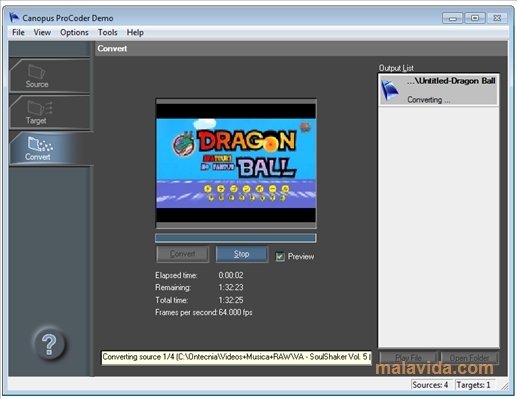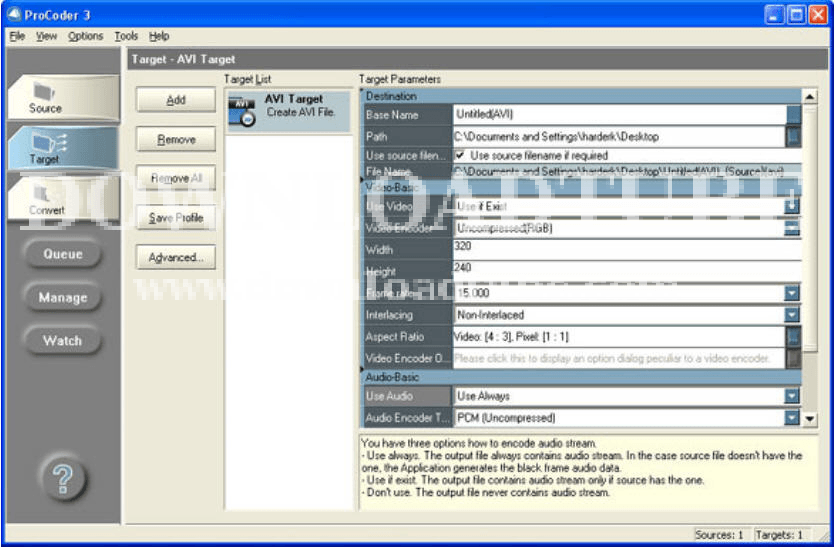

There are three differences between discs intended for playback onĭifferent TV systems: picture dimensions and pixel aspect ratio (720x480 Snell and Wilcox's The Engineer's Guide to Standards Conversion and TheĮngineer's Guide to Motion Compensation for technical details of conversion. (converting the video before it is encoded and put on the DVD). ProCoder do quite a good job of converting between PAL and NTSC at lowĬost, but they are only appropriate for the production environment
CANOPUS PROCODER 3.6 SOFTWARE
The latest software tools such as Adobe After Effects and Canopus Widescreen video for 4:3 displays (see 1.22). High-quality convertersĪre available from companies such as TenLab and Snell and Wilcox.īeware, some standards-converting players can't convert anamorphic External converter boxes are alsoĪvailable, such as the Emerson EVC1595 ($350). A very small number of NTSC players (such as Apex and Most NTSC players can't play PAL discs, and most NTSC TVs don't work (Sound is not affected by video conversion.) Because the quality ofĬonversion in DVD players is poor, using 60-Hz PAL output with aĬompatible TV provides a better picture than converting from NTSC to Proper "on the fly" standardsĬonversion requires expensive hardware to handle scaling, temporalĬonversion, and object motion analysis. Standards-converting PAL players that convert from an NTSC disc to True NTSC output when playing NTSC discs. Some players have a switch to choose 60-Hz PAL or True 3.58 NTSC from NTSC discs, which requires an NTSC TV or a The player uses the PAL 4.43-MHz color subcarrier encodingįormat but keeps the 525/60 NTSC scanning rate. These multi-standard players partially convert NTSC to a 60-Hz PAL (4.43 (See the chart atĪlmost all DVD players sold in PAL countries play both kinds of discs. New Zealand, Israel, North Korea, and other countries. PAL is the TVįormat used in most of Europe, most of Africa, China, India, Australia, Philippines, Taiwan, United States, and other countries. NTSC is the TV format used in Canada, Japan, Mexico, Discs are also coded for different regions of the world Therefore, there are two kinds of DVDs: "NTSCĭVDs" and "PAL DVDs." Some players only play NTSC discs, others play PALĪnd NTSC discs. The MPEG video on a DVD is stored in digital format, but it's formattedįor one of two mutually incompatible television systems: 525/60 (NTSC) Is DVD-Video a worldwide standard? Does it work with NTSC, PAL, I'm a little confused as to what Andrew (see bottom) Usually done so poorly, even by actual standards converters! Only a fewĬan make virtually perfect conversions, and they typically cost well I'm a stickler on this topic because it is I lifted the item below from the DVD FAQ websiteĬommercial DVD player does any kind of "serious" standards conversion,

(I'm not currently affiliated with an archiving institution, but I am interested in the moving image archiving field.) I'll try to research and find a technical explanation of how the PAL conversion may have advanced in quality since the DVD FAQ section on it was written.

But it works great for playback, and I've watched a couple of PAL DVDs on it recently. I don't presume to know if it is of high enough quality for purposes of transferring. It is good, though, that the article emphasizes that it's very important to confirm that the player does convert PAL before buying.Īlso, I'm talking about the quality as being flawless for purposes of watching at home or at work as if I were watching any normal NTSC DVD. Because of my lack of specific technical knowledge in this area, all I can think is to offer to give you a demonstration! :) Perhaps the technology of converting PAL for display on NTSC TVs has gotten better. Eric, the only thing I can think of is that possibly the portion of the DVD FAQ you're quoting (which is great and I use it as a reference too) might be slightly outdated.


 0 kommentar(er)
0 kommentar(er)
